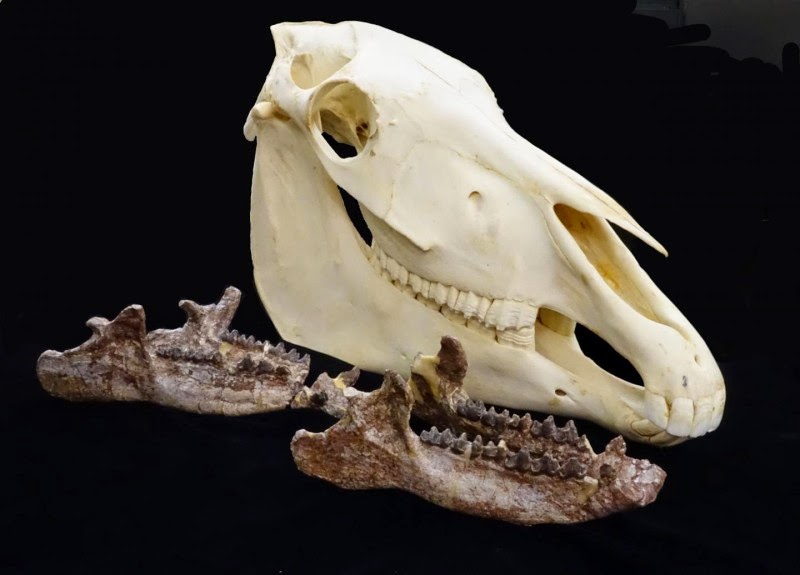
The discovery of new bones from a large land mammal that lived about 48 million years ago has led scientists to identify a new branch of mammals closely related to modern horses, rhinos, and tapirs, according to a study published October 8, 2014 in the open-access journal PLOS ONE by Lisa Noelle Cooper from Northeast Ohio Medical University and colleagues.
This family of large mammals, Anthracobunidae, is only known from India and Pakistan and was commonly considered to be ancestors of modern elephants and sea cows. Geographically, this was a puzzling idea, because elephants and their relatives were groups that were known from Africa, not Asia. These new fossils indicate that anthracobunids are related to the tiny tapirs that are well known from the Pakistani rocks, and that perissodactyls probably originated in Asia.
Researchers also analyzed stable isotopes and bone shape, finding that these animals most likely fed on land and were large and lumbering, but spent a considerable amount of time near water, similar to modern rhinos and tapirs. Dr. Lisa Noelle Cooper added, “Anthracobunids are just one of many lineages of vertebrates that evolved from terrestrial animals, but then left to live in a shallow water habitat and had thick bones. These thick bones probably acted like ballast to counteract body buoyancy. You can see that kind of bone structure in modern hippos, otters, penguins, and cormorants.”
Co-author Erik Seiffert added, “The evidence that has been accumulating from fossils and genes strongly suggests that the ancestor of elephants and sea cows lived in Africa, and at a time when that continent was totally isolated, so anthracobunids’ Asian distribution was hard to explain.”
Note : The above story is based on materials provided by PLOS.










